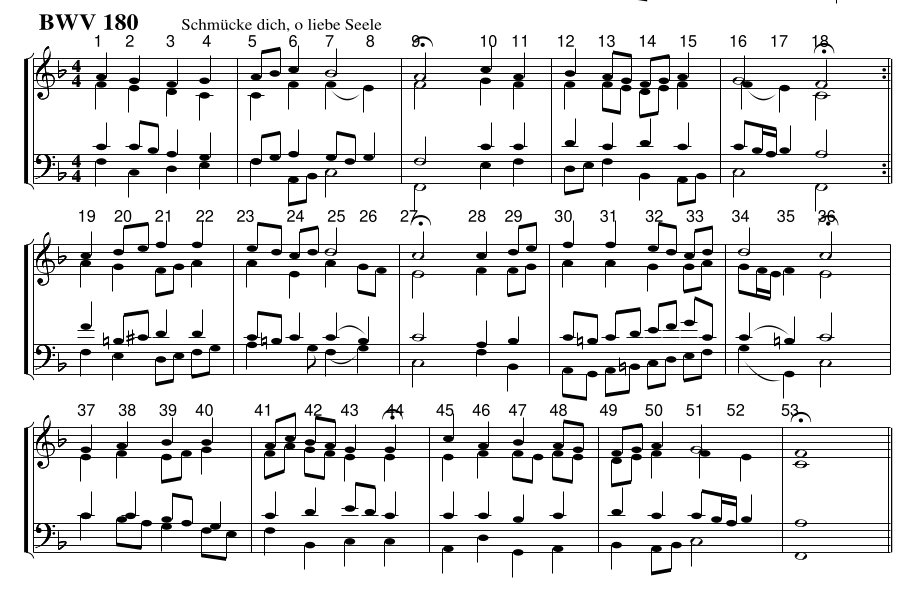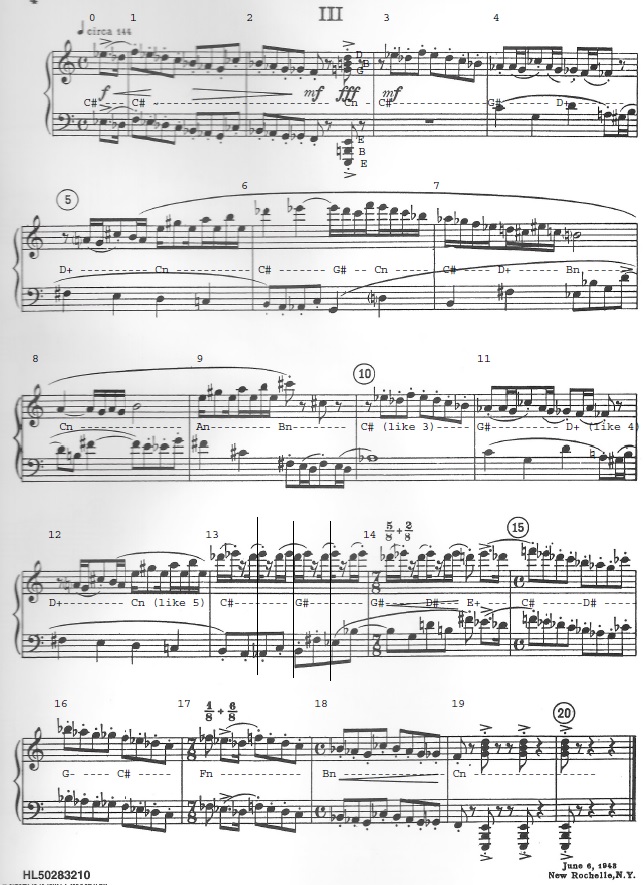Today’s addition includes some arpeggios based on the outputs of the coconet chorale building model, as modified by me. I made this by building a set of masks that would silence some of the notes in the arrays. My current data structure consists of 16 voice lines. Each line contains 264 slots, each a 1/16th note in length. If the slot contains a non-zero number, then that note will play. If it was just played a slot ago, then it is held over. If I mask a line, some of the positive values become zero. If I silence voice lines in sequence, such as silencing the soprano, alto, and tenor, then they don’t play. By carefully timing the masks, I create some arpeggios.
I also spread the pianos out in the stereo field, so that you can each each one more clearly.
I created a bunch of chorales, and ranked them by various metrics from a python library called muspy. The one called saved_chorale329 had the highest scale consistency score.
Here is the arpegiation code in python.
def arpeggiate(chorale,mask):
for i in range(0, chorale.shape[1]// mask.shape[1],3): # skip every third one.
start = i * 8
end = (i+1) * 8
chorale[:,start:end] = mask * chorale[:,start:end]
return(chorale)
numpy_file = 'numpy_chorales/saved_chorale329.npy'
chorale = np.load(numpy_file)
mask = np.zeros((16,8))
# 1st part
mask[0,] = [0,0,0,1,1,0,1,1]
mask[1,] = [0,0,1,1,0,1,1,1]
mask[2,] = [0,1,1,0,1,1,1,0]
mask[3,] = [1,1,1,1,1,1,0,1]
# 2nd part
mask[4,] = [0,1,1,1,0,1,1,1]
mask[5,] = [0,0,1,1,0,0,1,1]
mask[6,] = [0,0,0,1,0,0,0,1]
mask[7,] = [1,1,1,1,1,0,1,0]
# 3rd part
mask[8,] = [0,0,1,1,0,1,1,1]
mask[9,] = [0,1,1,1,0,0,0,1]
mask[10,] = [0,0,0,1,0,0,1,1]
mask[11,] = [1,1,1,0,1,0,1,0]
# 4th part
mask[12,] = [0,0,0,1,1,0,1,1]
mask[13,] = [0,0,1,1,0,1,1,1]
mask[14,] = [0,1,1,0,1,1,1,0]
mask[15,] = [1,1,1,0,1,1,0,1]
np.save('arpeggio7.npy',arpeggiate(chorale,mask))



